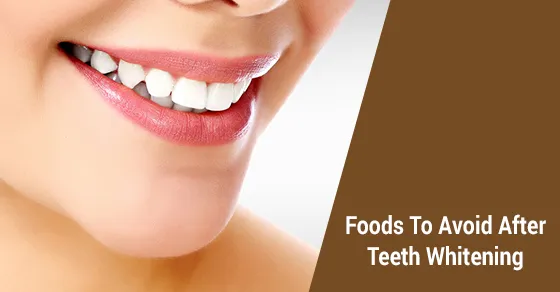Can I Eat Avocado After Teeth Whitening?
The short answer is it’s complicated. While avocado is a nutritional powerhouse, rich in healthy fats and vitamins, its consumption after teeth whitening requires careful consideration. The primary concern stems from the potential for avocado to stain your newly whitened teeth. During teeth whitening, the enamel pores open, making them more susceptible to staining. This is why dentists often recommend a white diet to their patients to prevent unwanted staining. Understanding the science behind teeth whitening will help you make the right choice. It is essential to listen to your dentist’s recommendations and consider how different foods can impact your results. It’s a balancing act between enjoying your favorite foods and protecting the investment you’ve made in a brighter smile.
Why is Avocado a Concern After Teeth Whitening?
Avocado, with its vibrant green color and creamy texture, poses a potential risk due to its pigments. The natural coloring agents within avocado, like chlorophyll, can adhere to the enamel. As the enamel pores are open, these pigments can penetrate, leading to discoloration. The same principle applies to other deeply colored foods and drinks, such as berries, coffee, tea, and red wine. The intensity of the color and the length of contact with the teeth also play a role. A prolonged exposure to staining agents increases the likelihood of color absorption. The best approach is to be cautious during the initial days or weeks following your teeth whitening treatment. After that, you can slowly reintroduce such foods.
What Makes Avocado Potentially Harmful?

The primary culprit is the pigment content and the overall color of the fruit. While avocado doesn’t have the intensely concentrated staining compounds found in berries or coffee, its green hue can still impact the whiteness of your teeth. In addition to the pigment, the natural oils present in avocado might also contribute to staining. These oils could potentially trap the pigments and facilitate their penetration into the enamel. The combination of the color, the presence of natural oils, and the porous state of the enamel post-whitening make avocado a potential concern. Therefore, be mindful and take steps to minimize contact.
What are the Best Foods to Eat After Teeth Whitening?
Following a white diet is generally recommended to maximize and maintain the results of your teeth whitening. This diet focuses on foods that are white or light in color and have a low staining potential. Examples of foods that are typically safe to consume after teeth whitening include:
- White rice
- Chicken or turkey (skinless)
- Plain pasta
- White fish
- Bananas
- Oatmeal
- Yogurt
- Cauliflower
These foods are less likely to stain your teeth and will help to keep your smile bright and healthy. Remember to stay hydrated by drinking plenty of water.
How Long Should I Wait to Eat Avocado After Whitening?
The timeframe for reintroducing avocado into your diet after teeth whitening depends on various factors, including the type of whitening treatment you had, your dentist’s specific recommendations, and your sensitivity to staining. As a general guideline, it is often suggested that you avoid avocado and other potentially staining foods for at least 48 to 72 hours. During this time, your enamel pores are most open and vulnerable. Some dentists recommend waiting up to a week or longer, especially if you underwent a professional whitening treatment. For longer-lasting results, consider prolonging the period of avoidance. Always consult your dentist for personalized advice tailored to your specific situation.
How Can I Minimize the Risk When Eating Avocado?

If you can’t resist avocado, there are a few strategies to minimize the staining risk. First, consume avocado in moderation. Small portions will reduce the exposure of your teeth to the staining pigments. Second, pair it with foods that have a cleaning effect. For example, eating avocado with a crisp apple or celery can help to scrape away any lingering pigments. Third, rinse your mouth with water immediately after eating avocado to remove any remaining particles. Brushing your teeth after a waiting period (at least 30 minutes) can also help to eliminate any potential stains. Consider using a straw when consuming avocado-based smoothies to minimize direct contact with your teeth.
How to Maintain Your Whitening Results
Maintaining your whitening results requires diligence. In addition to avoiding staining foods, practice good oral hygiene. Brush your teeth twice a day for two minutes each time, and floss daily to remove plaque and food particles. Consider using a whitening toothpaste or mouthwash to maintain brightness. Schedule regular dental check-ups and cleanings to remove any surface stains and assess your oral health. Your dentist may also recommend touch-up whitening treatments to keep your smile at its best. Regular maintenance, combined with a cautious diet, will help you preserve your beautiful, bright smile for a long time.
Additional Tips for Teeth Whitening Aftercare
Beyond dietary considerations, other factors can affect your teeth whitening results. Avoid smoking or using tobacco products, as these are major sources of stains. Limit your intake of dark-colored beverages, such as coffee, tea, and red wine. Consider using a straw to drink these beverages to minimize contact with your teeth. Stay hydrated to promote saliva production, which helps to wash away food particles and neutralize acids. If you use over-the-counter whitening products, follow the instructions carefully to avoid any adverse effects. Consistent and careful aftercare will not only preserve your results but also promote long-term oral health.
